Some eyebrows were raised when Hertha BSC broke the bank and signed Dodi Lukébakio from Watford last year. “Why would we break our transfer record for a 15-minute man?”, as some fans might ask. Yes, Hertha paid 20 million euros for Lukébakio who only played a quarter of an hour in the Premier League.
Yet, all negatives became positive after Lukébakio’s strong first season at the Olympiastadion. The Belgian’s versatility and quality in the final third silenced his doubters. Without further ado, this tactical analysis will inform you of Lukébakio’s role in Die Alte Dame’s tactics.
Player profile
Lukébakio is a versatile attacker who can play in all areas of Hertha’s frontline. However, his preferred position is in the right flank. The 22-year-old is blessed with great physique, standing at 187 centimetres and 77 kilograms, more like a target man rather than a winger from this perspective alone.
Lukébakio’s greatest assets are his explosive pace and above-average vision. This is one of the reasons why he ended the 2019/20 season with eight goals and eight assists in all competitions, including a goal against the eventual UEFA Champions League winner, FC Bayern München. His tally of seven goals and six assists in last season’s Bundesliga was even the best among his teammates. This scout report will look further on his role and impact for the Berlin-based club.
Useful in Hertha’s direct approach
Hertha are a team that prefer to launch direct balls to their forwards rather than building their attacks from the back. The statistics prove this, as Hertha averaged about 70 long balls per game last season. That’s the second-highest tally in the Bundesliga.
As a winger, Lukébakio could be used as the long pass receiver when the ball is launched to the flank. His sheer size helped him to dominate aerial duels against Bundesliga’s full-backs. However, he could also serve as a potential second ball winner when the ball is played to the wide area. When that happens, usually one of the midfielders would drift wide to win the aerial duel. Then, either Lukébakio or his nearby teammates will try to win the second ball to continue Hertha’s attack.
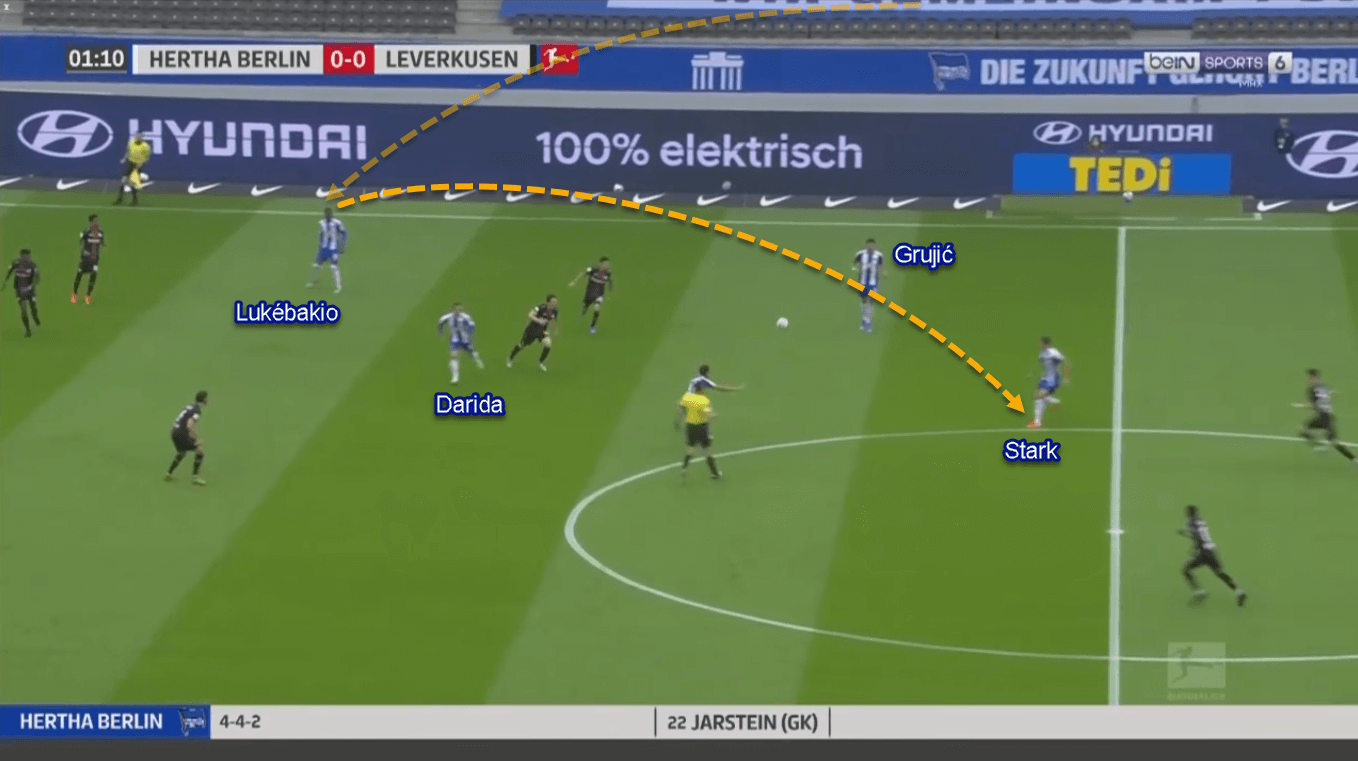
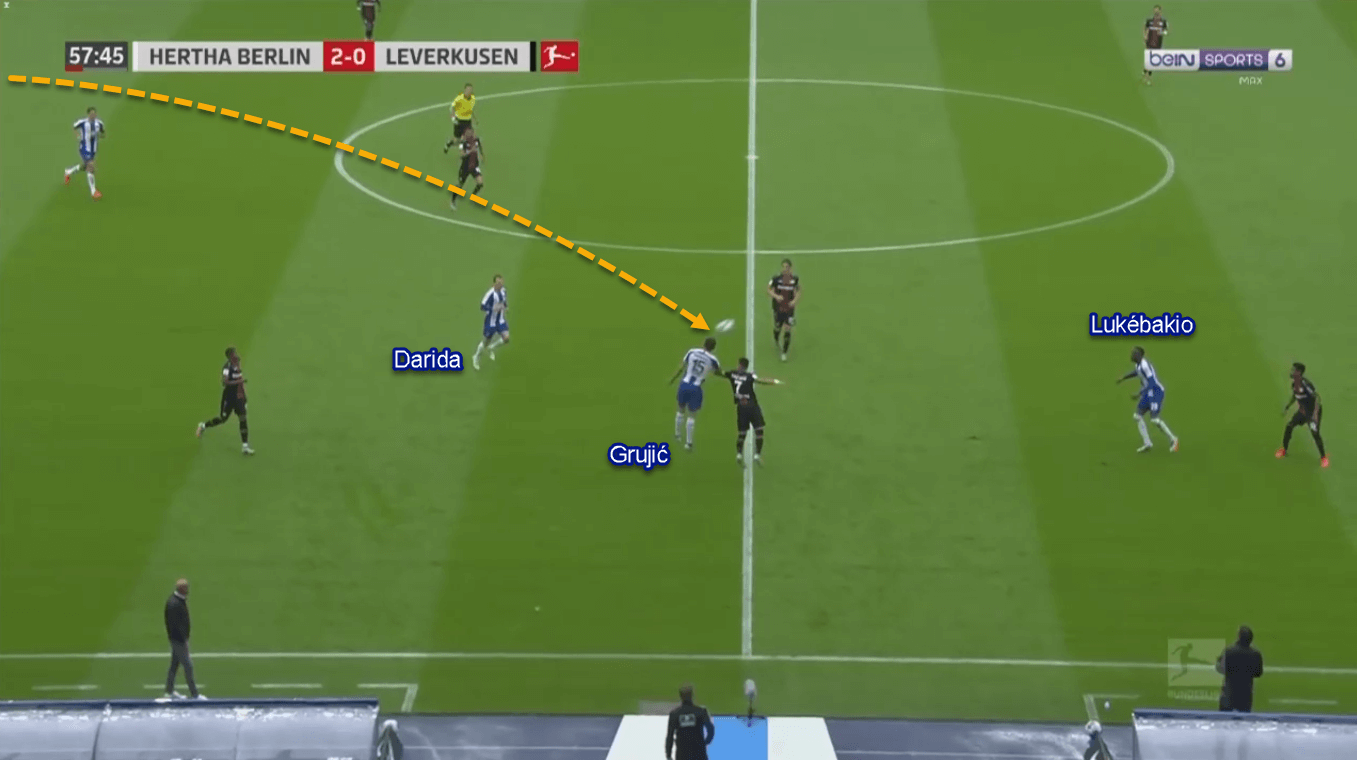
What happens if the ball is played to the target man? If Lukébakio plays as a winger, he would usually come central to stand closer to the centre-forward. Such movement would also be done by his attacking comrades so the striker would have many lay-off options.
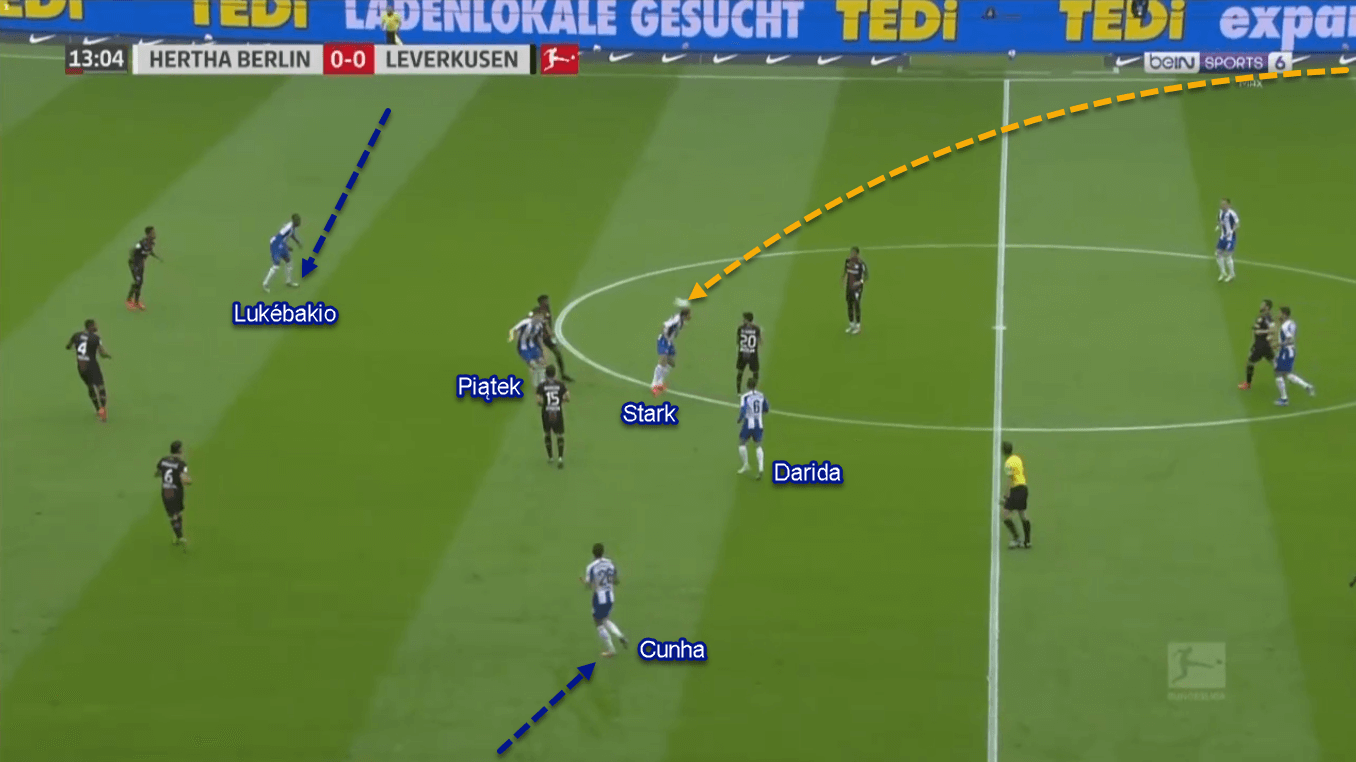
If Lukébakio is deployed as a striker in a two-forward system, he would also serve as a potential receiver. When he does that, Lukébakio is instructed to stand more advanced than his partner, who fights for the ball. The objective behind this is to give Hertha a vertical passing option if the ball is won by their striker.
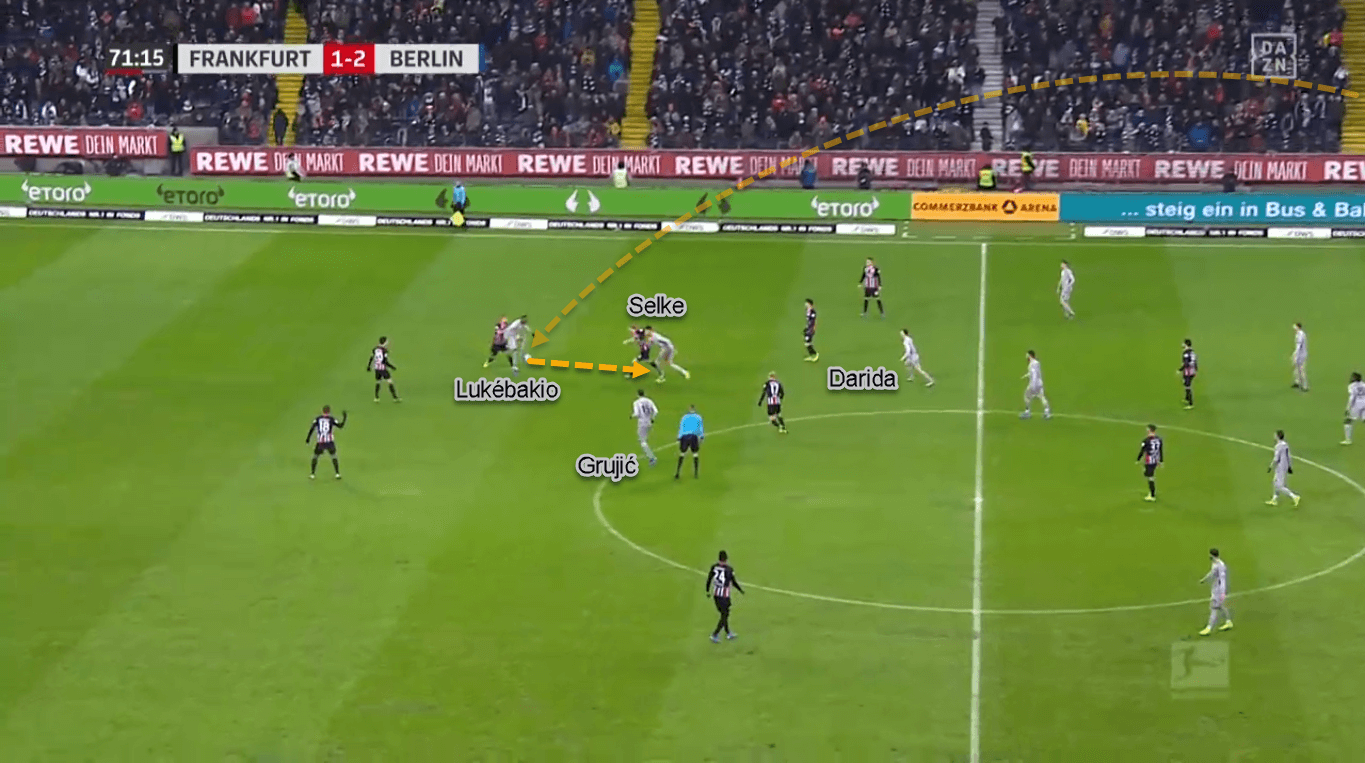
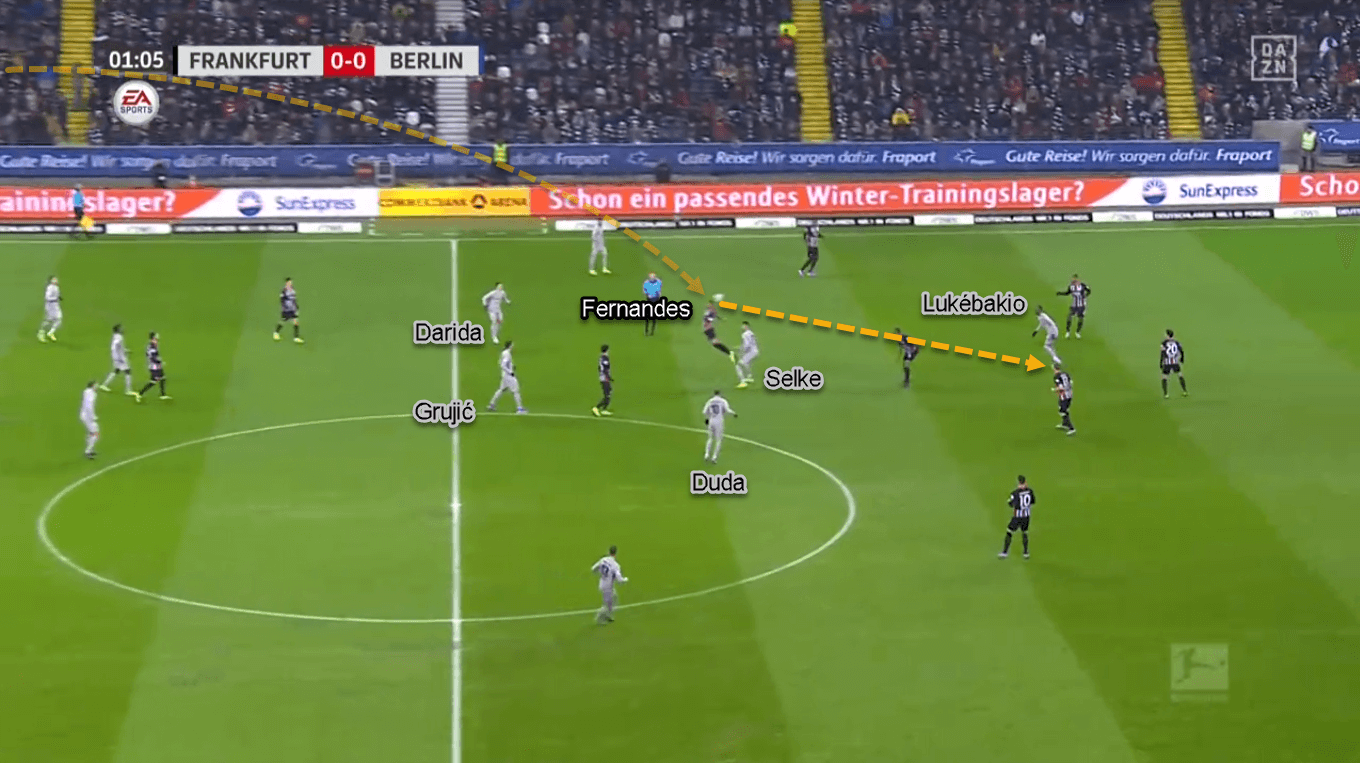
Very dangerous if given space in behind
Previously, this analysis has mentioned that Lukébakio has exquisite pace. But how does he utilise that? Does he just run like a madman or is there any particular tendency that he likes to make?
Lukébakio’s trailblazing speed helps him to excel in counter attacks as well as open plays. In transitions, oftentimes he would drift wide first to give width to Hertha’s counter-attack. After that, he usually would drive into the half-space and look to receive.
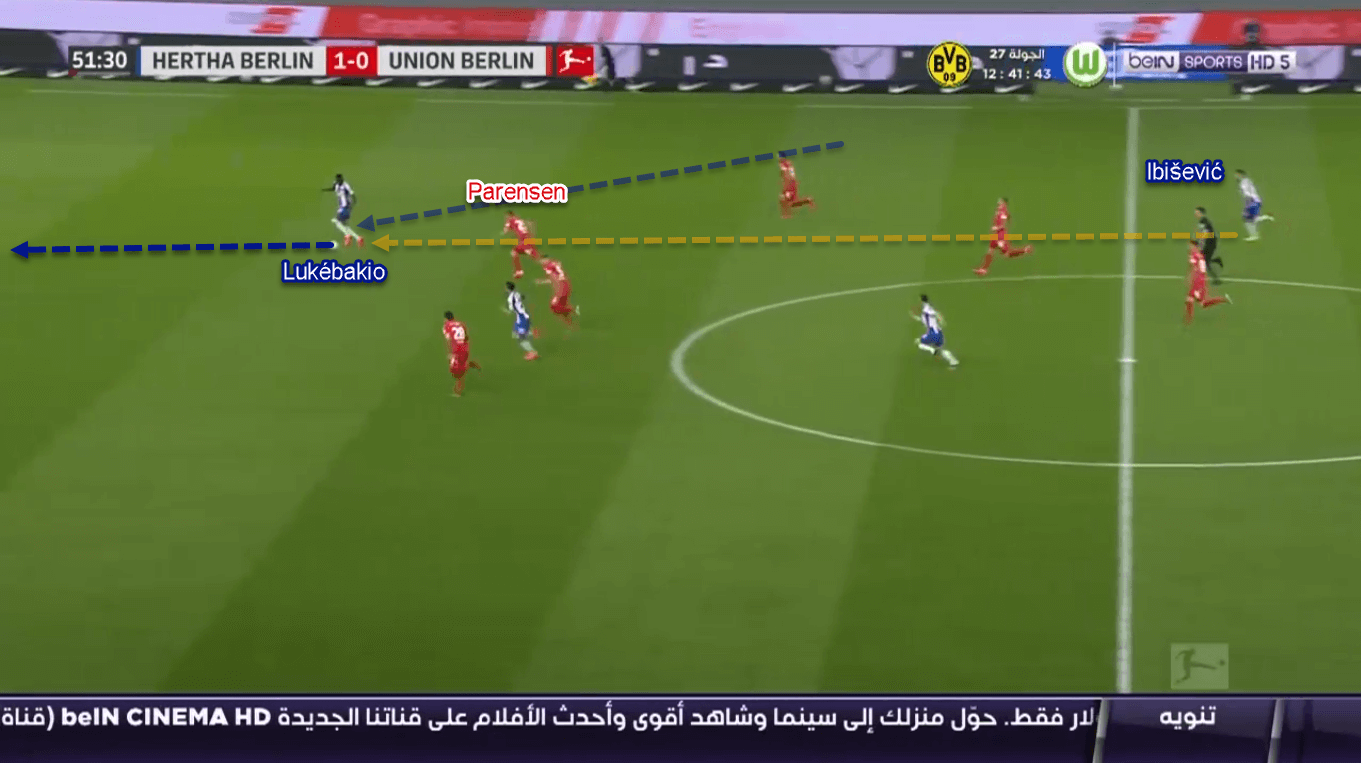
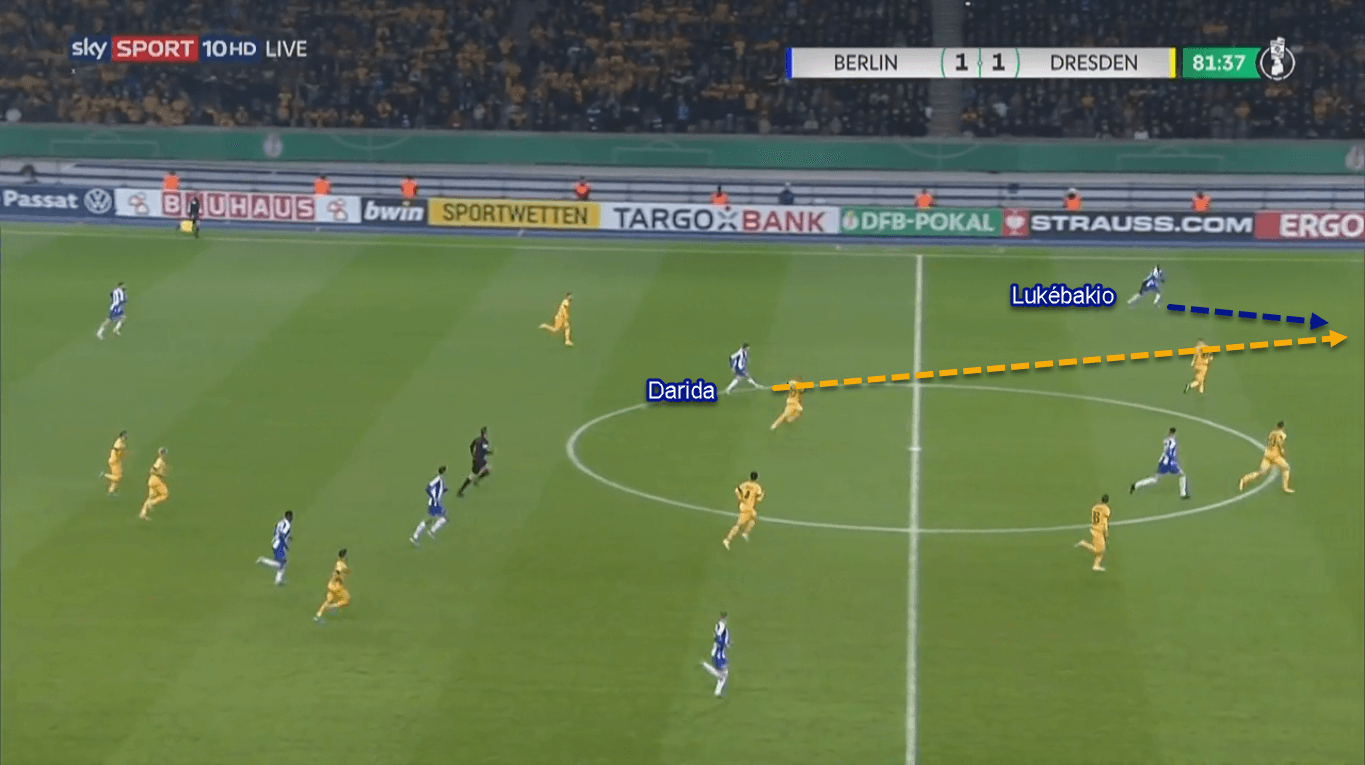
The opposite happens when Hertha enjoy the possession. The number 28 would tuck inside and allow his full-back or the drifting midfielder to provide the width. To utilise Lukébakio’s pace, one of the deeper players would try to send a through-ball into the half-space or near the touchline. Lukébakio then would attack the ball quickly by starting from his marker’s blind-spot. By doing so he would make himself less detectable and have the advantage over the defender.
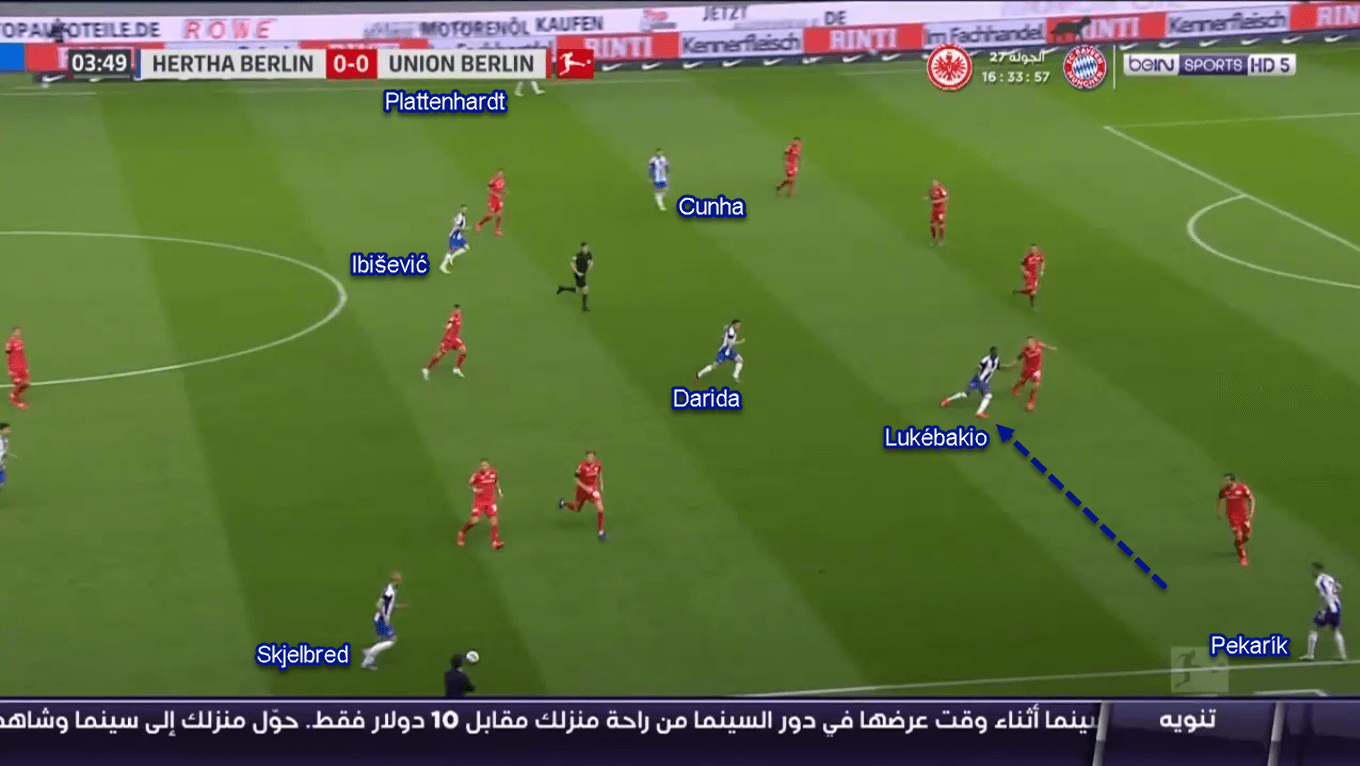
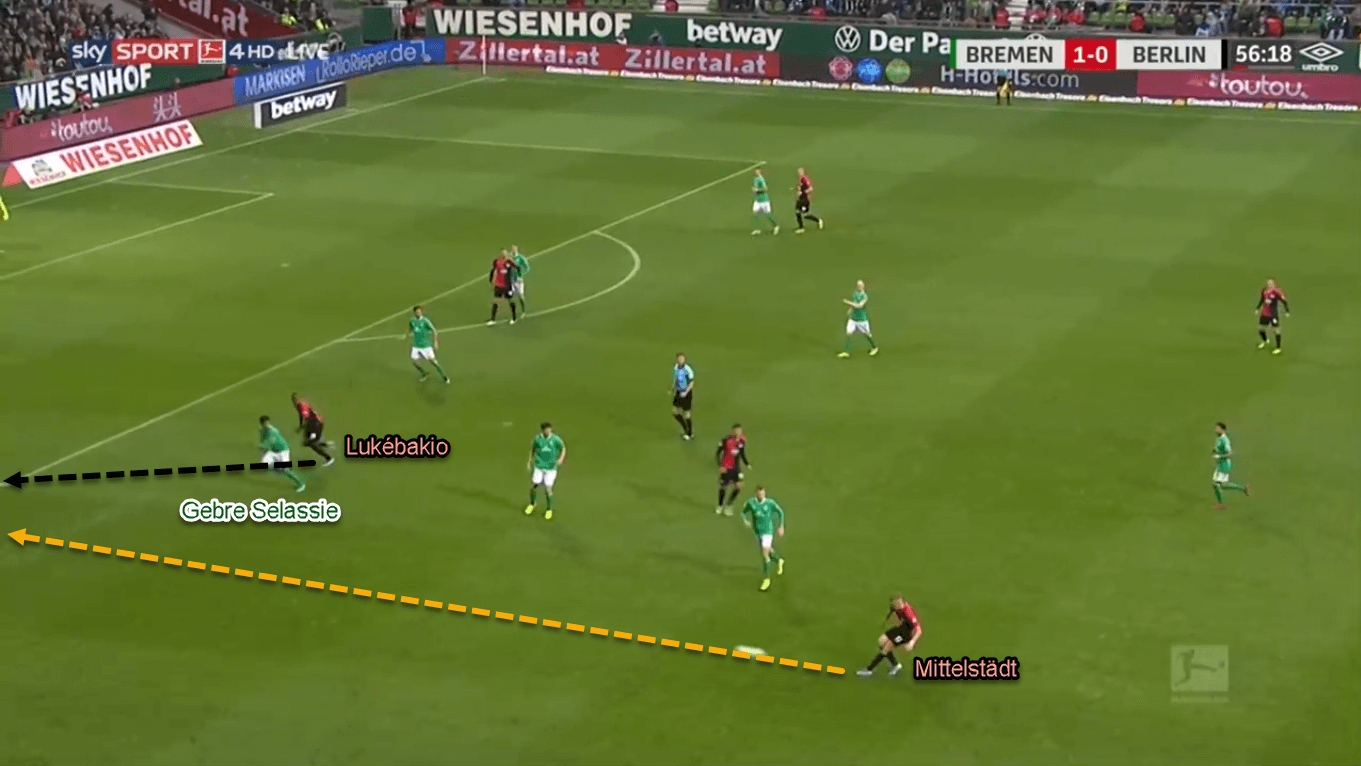
As a centre-forward, he usually would face two defenders in the final third. However, Lukébakio has a clever way to combat numerical inferiority, that being by standing in between the defenders to confuse them on who has to close him down. After that, Lukébakio can use his speed advantage to chase the through-ball in behind.
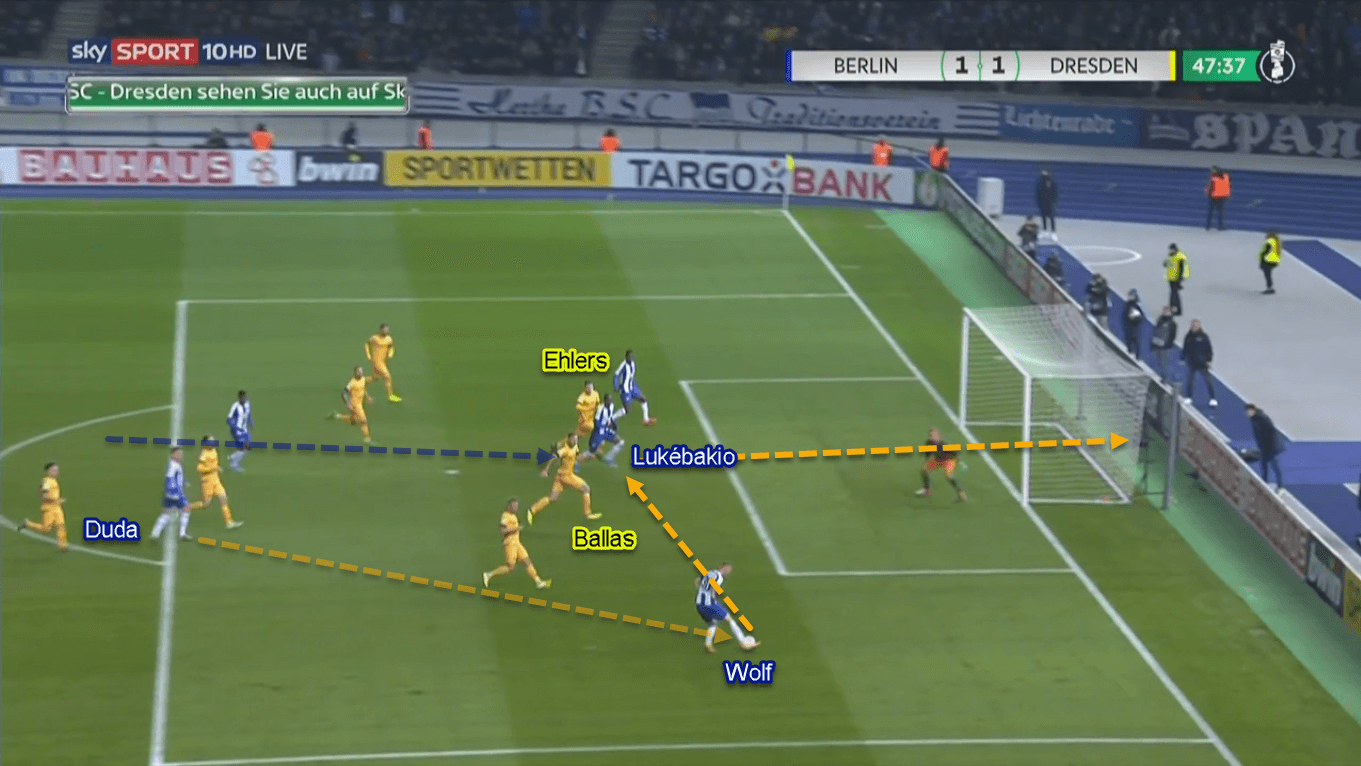
Pinpoint passer
Lukébakio is a crafty attacker. Not only excelling in executing his teammates’ service, but he’s also a creative player who can set up chances for others. The stats back this finding as Lukébakio averaged 1.6 key passes per 90 minutes in the Bundesliga. That’s the fourth-highest among Die Alte Dame’s players.
Firstly, Lukébakio has a tendency to drop from his initial position to offer link-up plays in deeper areas. This is useful particularly when there are no midfield options for the defenders to play. However, he’s not limited to playing safe passes.

He can also deploy accurate switch passes to immediately change Hertha’s point of attack. If we look at the statistics, Lukébakio attempted 153 long passes in the league last season, third-most among all Hertha’s attackers. From that number, 105 (68.62%) were accurate. Not bad for a winger, eh?
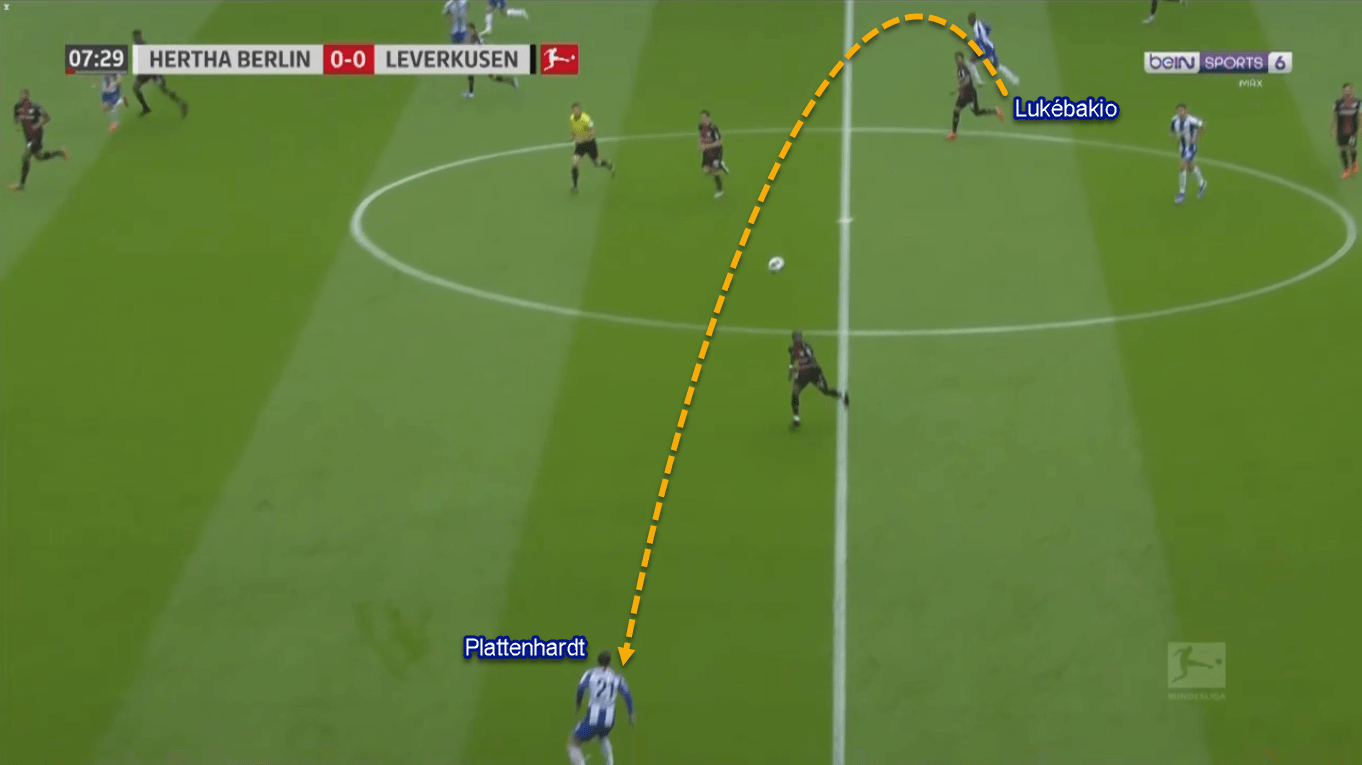
The youngster seems to have lots of passing types under his belt. He can send almost all types of cross with pinpoint accuracy; from hard-and-low balls to lofted crosses. The stats show that Lukébakio averaged 0.7 successful crosses per 90 minutes in the Bundesliga; fourth-best in his team.
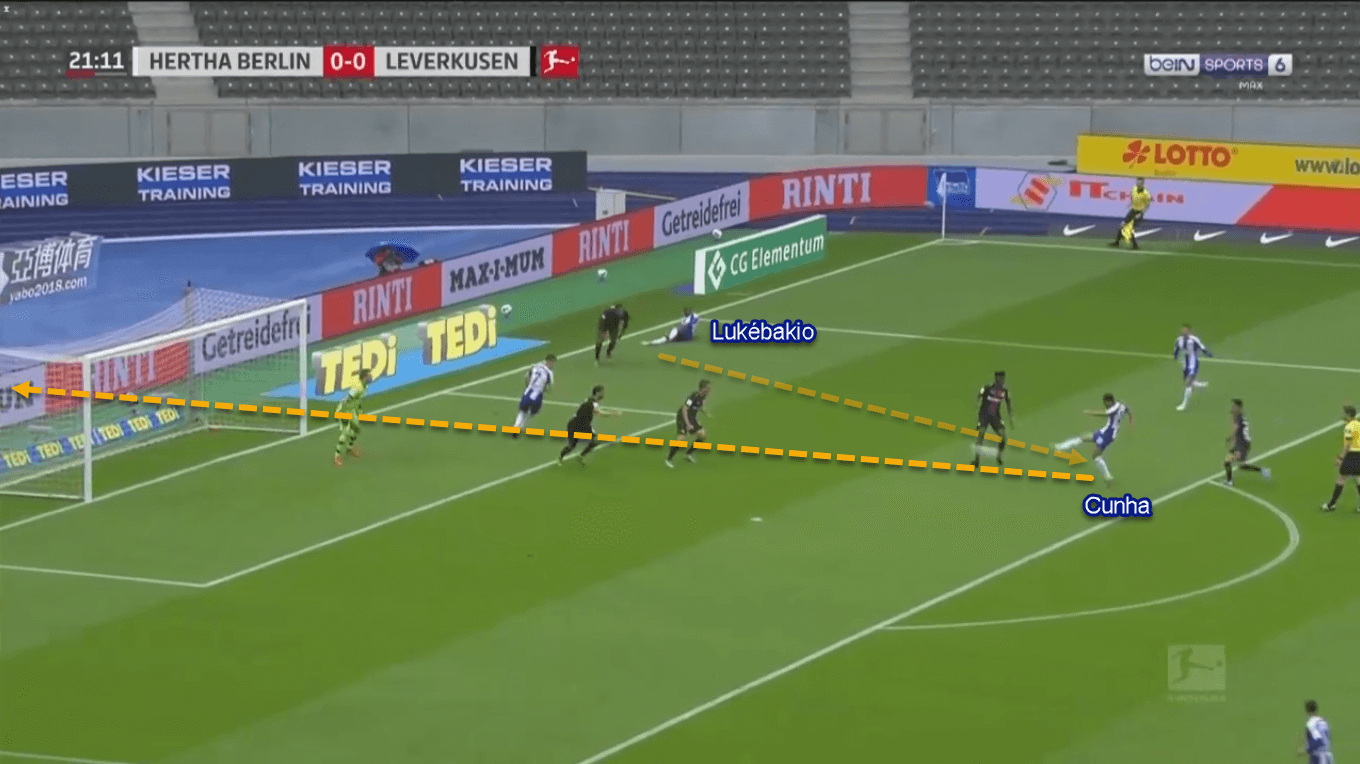
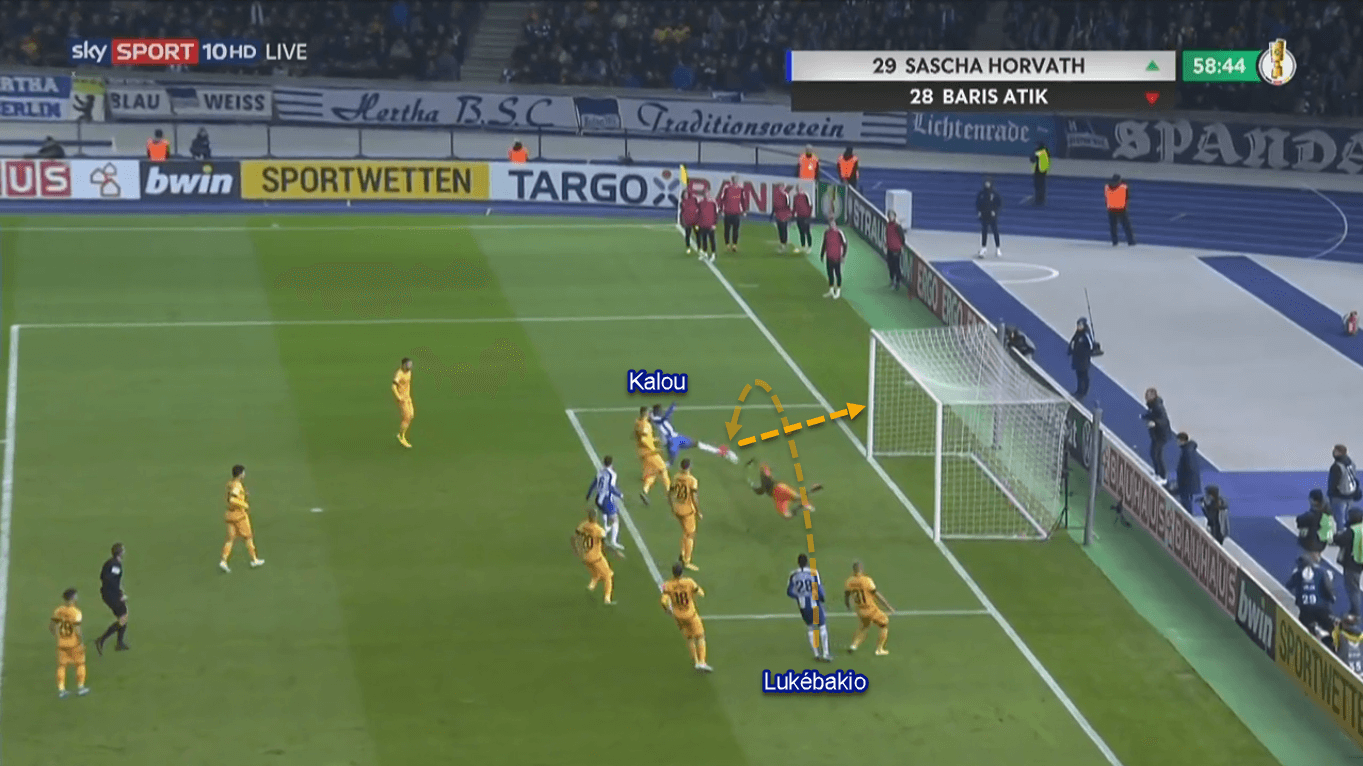
Defensive roles
Hertha’s roller-coaster 2019/20 was marked by their constant change of managers. After Ante Čović left the club in late 2019, Jürgen Klinsmann replaced him for just 76 days. Then, the hot seat was given to Alexander Nouri for merely two months before Bruno Labbadia was hired in April. This part of the analysis will focus more on Labbadia’s defending tactics and how Lukébakio fits in.
Under Labbadia, Hertha were happy to cede the ball. This is proven by their average of just 46.5% possession, fifth-lowest in the league last season. When they do so, Labbadia would instruct his men to defend in a mid-block 4–1–4–1 or 4–4–2 and close the central lanes.
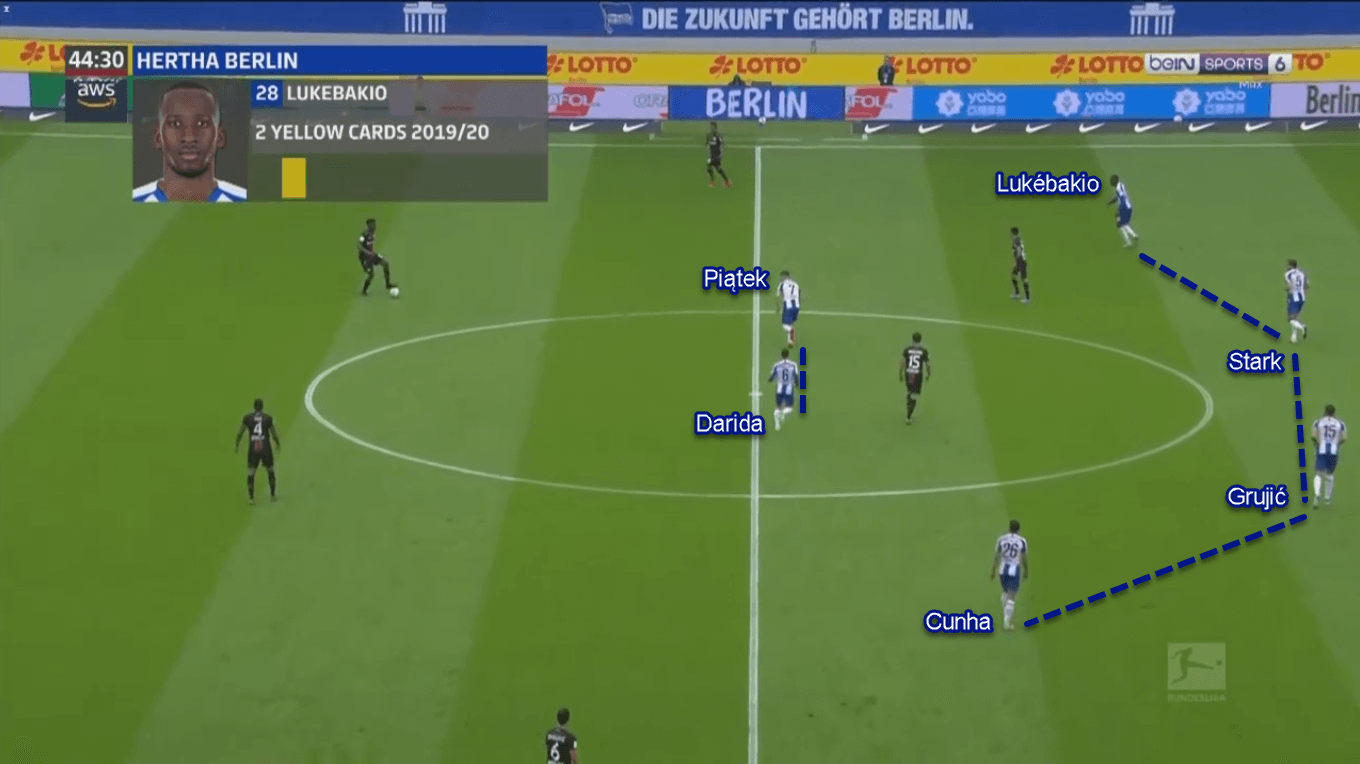
Hertha’s central-focused defending would often force their opponents to play through the flank. This is where Die Alte Dame would come into action and execute their press. In their wide-area press, Hertha’s nearby winger would try to close down the on-ball opponent as quickly as possible. Behind him, the nearby Hertha midfielder would come out from his position and close the progressive option for the full-back. This calculated press would then force the on-ball opponent to play the ball backwards.
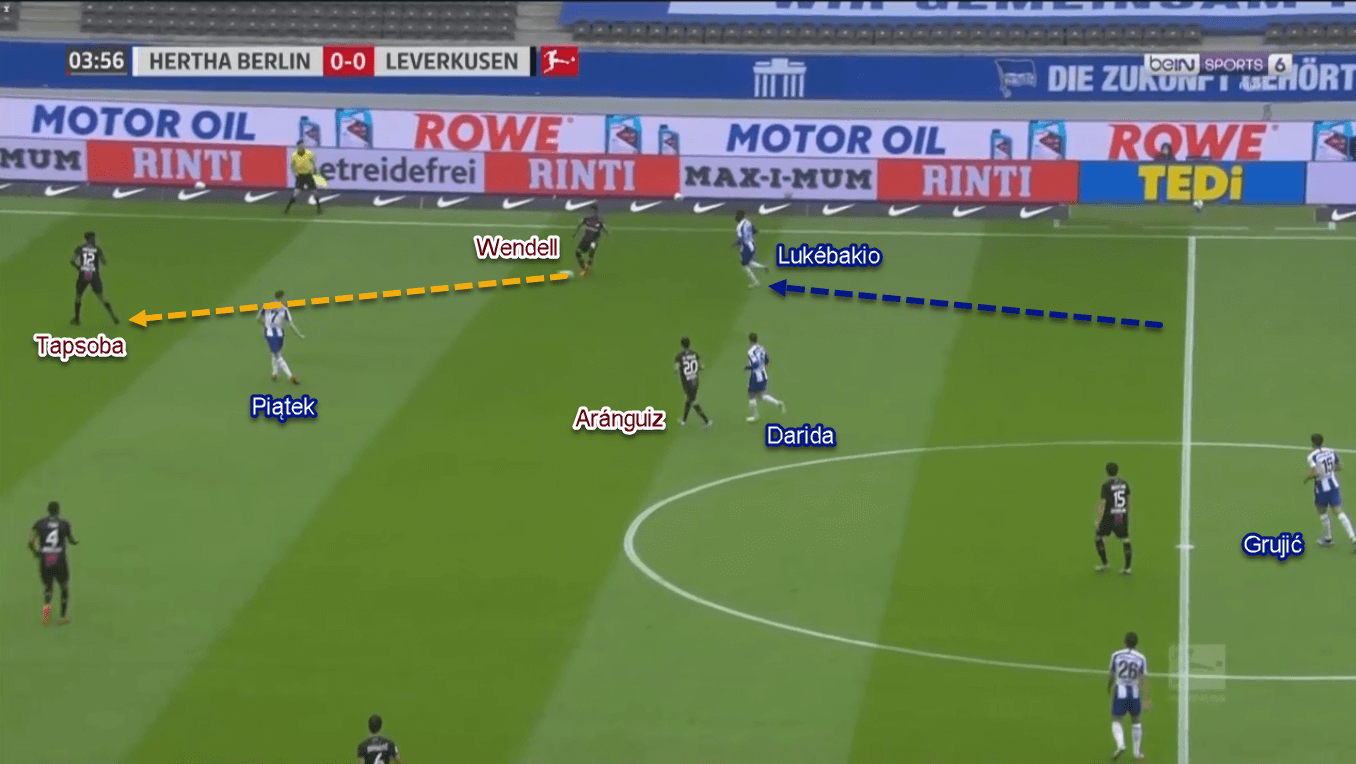
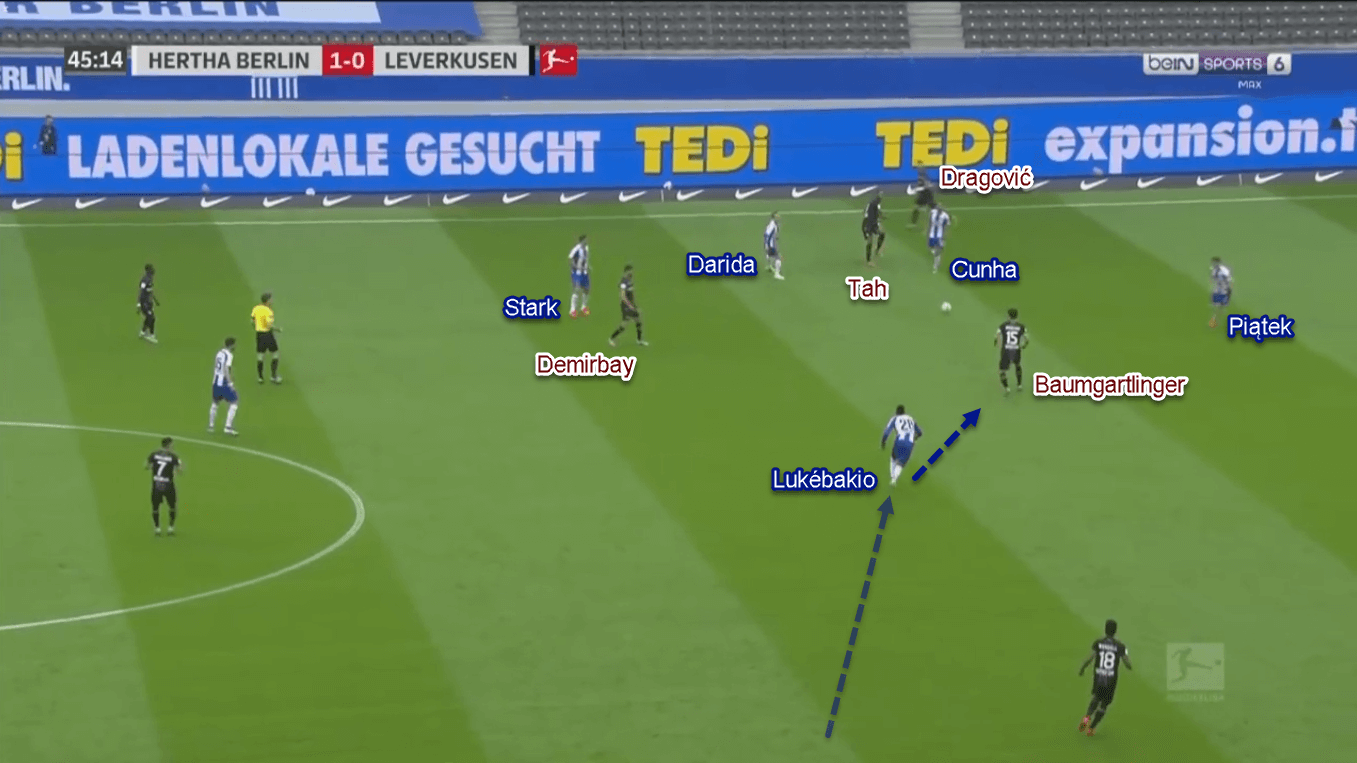
Lukébakio seems to fit in this defensive strategy. His high-rate of successful defensive actions gave the proof. Last season, Lukébakio averaged 1.1 (57.89%) winning tackles per 90 minutes. This rate is the third-highest of all Hertha’s forwards.
Potential issues
Despite all his versatility and explosiveness, Lukébakio still needs to add more to his game. As a marquee signing, he would be expected to get double-digit goals in his second season. This part of the scout report will take a further look at which area the youngster can improve, as a winger and a centre-forward.
As a winger, Lukébakio still lacks ability in one-versus-one duels. Quite often, he looks confused when facing a defender in such a duel. He could be found holding the ball too long and being very passive in his dribbles. This usually would enable the opponents to outnumber him and win the ball back.
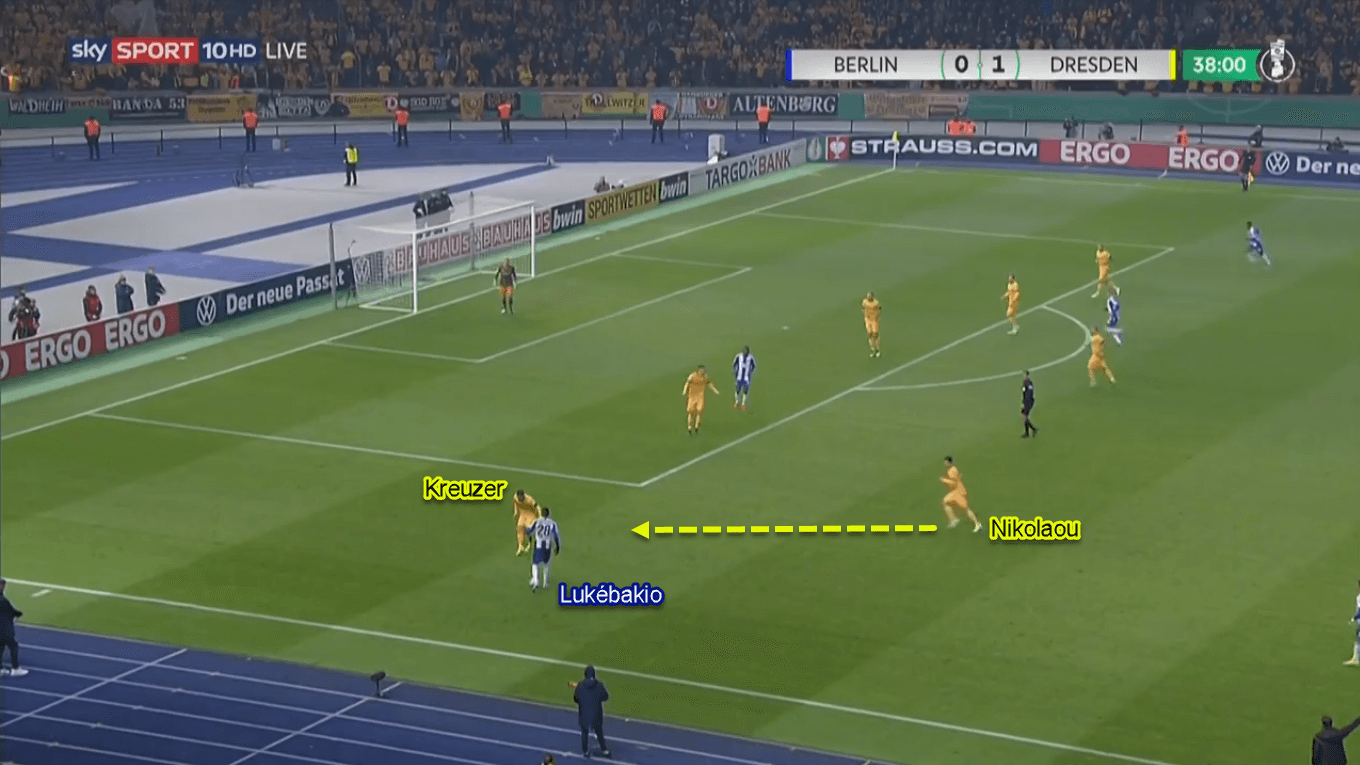
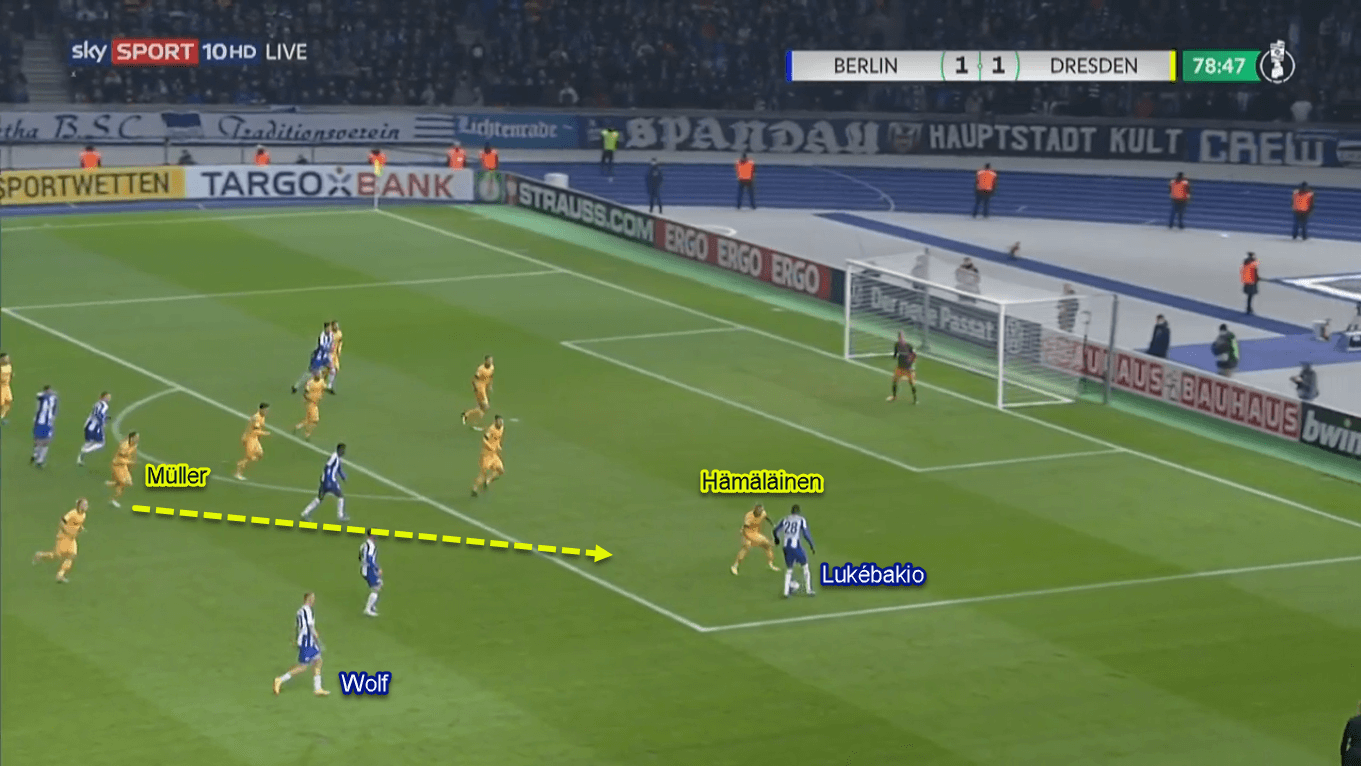
A different problem occurs when he’s deployed centrally. As a target man, Hertha’s attackers are demanded to win physical duels in the air to continue the attack. However, it seems that Lukébakio still lacks the strength needed to face the Bundesliga’s centre-backs.
He has great stature (187 cm, 77 kg), but it seems that he can’t use it against the central defenders. Lukébakio’s stats in the air weren’t good, to say the least. He only managed to win 0.9 (40.9%) of his aerial duels per 90 minutes last season. He could improve this by adding upper-body muscle, as well as getting better with his positioning and timing when engaging in such a duel.
Conclusion
The 20-million-euro price tag seems to fit Lukébakio perfectly. He made an instant impact by contributing to 16 goals in his debut season at Hertha. His verticality and creativity also make him a great asset for the Berlin-based club.
Despite everything, Lukébakio still has a lot to improve on his game. That being his dribbling quality, as well as physicality and game-reading ability as a centre-forward. If he does that, Lukébakio could finish with a double-double in terms of goal contributions. Even better, he could even convince Roberto Martínez to call him to the national team.
So, what’s next, Dodi?

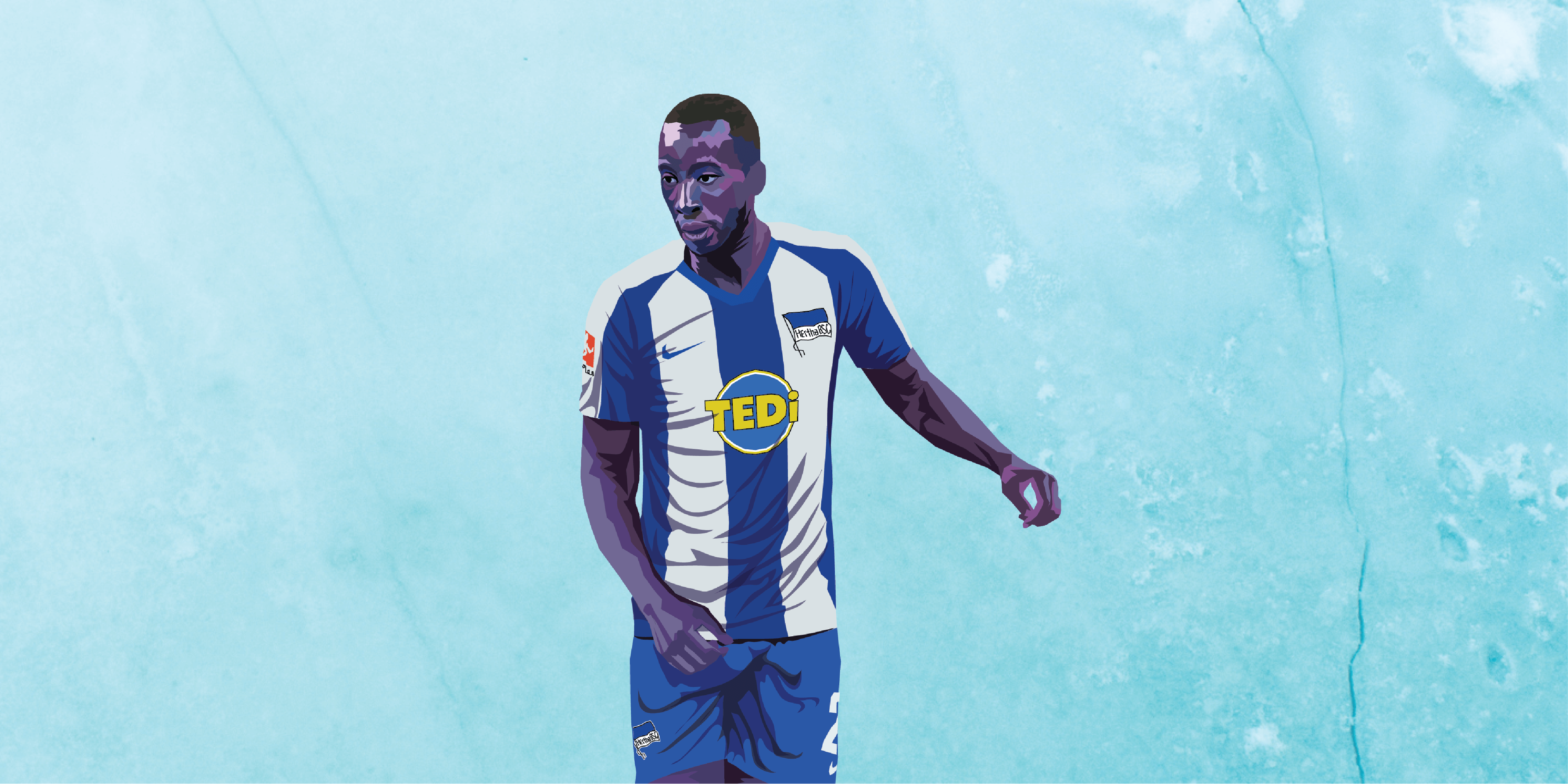



Comments